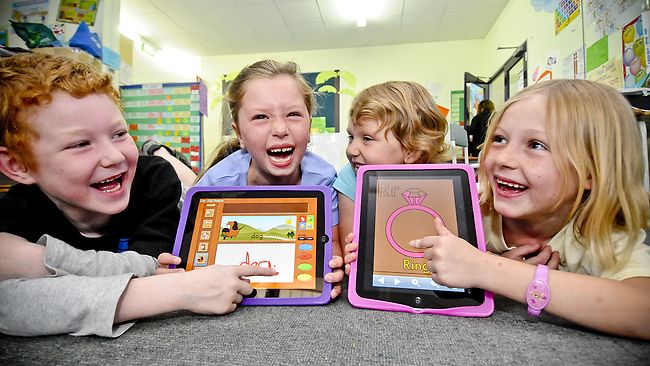Teacher Competencies
Teacher Technology Competencies A
Teacher Technology Competencies B
The Western Australia Department of Education and Training (n.d.) in a study of the ICT skills of teachers states that an assumption is made "that teachers themselves are competent and confident in the use of ICT in terms of teaching and learning" (p. 8). The Hunter School of Education, when discussing technology competencies, indicate five areas in which teachers need to be competent These are: Productivity, Research, Communication, Media and Presentation. The use of Media and Presentation are particularly relevant technologies to the face-to-face teaching scenario. Hunter School of Education List the following characteristics (p.2):
Media
"The Competent Teacher can...
Differentiate instruction with digital media. This includes an awareness of assistive technologies for disabled students as well as an ability to use a computer to prepare and present academic ideas in a variety of forms for better learning by all students.
Capture and edit
images, audio, and video. The teacher can use digital stills and video cameras, edit
their output on a computers, and produce learning materials that range from
simple slide shows to the archiving of student presentations and performances
Produce digital multimedia educational experiences. The teacher can combine media from a wide array of sources into a useful presentation of academic content, and can teach this skill to students.
Presentation
Create effective digital presentations. Using common tools for preparing slide shows, videos and podcasts, the teacher can create presentations that follow the principles of communication, and can apply these design principles to evaluation of student's digital work.
Deliver digital multimedia presentations. Using common devices such as computers, projectors and screens, the teachers can set up classroom presentations, deliver them comfortably and effectively, and arrange for students to do the same.
Employ new media devices for learning. From large SmartBoards to tiny iPods to science probes, the teacher can incorporate a variety of digital devices into the instruction in the classroom, and use them to extend learning opportunities for students outside of school."
Levels of student achievement are directly linked to levels of effective teacher professional development (Darling-Hammond, 1999). Lawless and Pellegrino (2007) claim that 'Technological literacy has fast become one of the basic skills of teaching. The sheer increase in the availability of electronic resources in schools and classrooms make it important for teachers to be prepared to effectively integrate technology into their instructional strategies' (p. 580)
Mitchem, Wells and Wells (2003) conducted research using a 37 -item rating scale on pre- and post professional development training lesson plans, scoring changes in such parameters as; objectives, procedures, strategies, integration and assessment. They report that scores on each indicator were significantly higher except for objectives and assessment. The reason for this was thought to be the need for teachers to be better informed on how to assess student learning with and through technology. In their discussion, Mitchem, Wells and Wells (2003) conclude that a crucial teacher competency in using technology in teaching and learning was ..."that educators understand how to create and deliver high-quality , technology-infused lessons that engage students and improve learning" (p. 411).
References
Darling-Hammond, L. (1999). Educating the academy's greatest failure or its most important future? Academe, 85(1), 26-33.
Guzman, A. & Nassbaum, M. (2009). Teaching competencies for technology integration in the classroom. Journal of Computer Assisted Learning, 25, 453-469.
Hunter School of Education. (n.d.) Teacher Technology Assessment and Growth.
Retrieved from http://www.macenty.org/images/uploads/Technology_Competencies.pdf
Lawless, K. A., & Pellegrino, J. W. (2007). Professional development in integrating technology into teaching and learning; knowns, unknowns, and ways to pursue better questions and answers. Review of Educational Research, 77(4), 575-614.
Mitchem, K., Wells, D. L., & and Wells, J. G. (2003). Effective integration of instructional technologies (IT): Evaluating professional development and instructional change. Journal of Technology and Teacher Education, 11(3), 397-414.
Western Australia Department of Education and Training (n.d.)
Teacher ICT skills. Evaluation of the information and communication technology and skill levels (ICT) of Western Australian Government school teachers. Evaluation and Accountability.
image sources: http://www.yalescientific.org/wp-content/uploads/2013/02/Science-Essay-1-500x500.jpg
http://www.teamzboard.com/ceratech2009/photos/product/keyboards/hires/kyb500-k82a_3.jpg
http://coedtech.wp.orvsd.org/ipads-and-ipods/using-the-ipad-ipod-in-the-classroom


